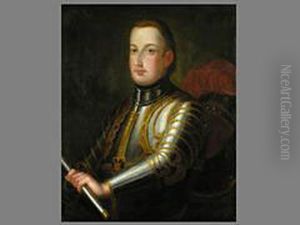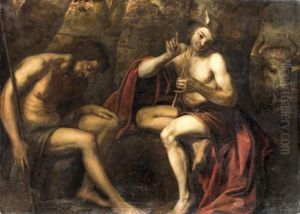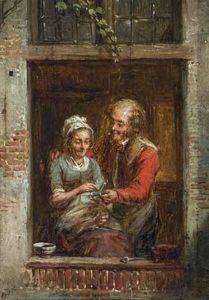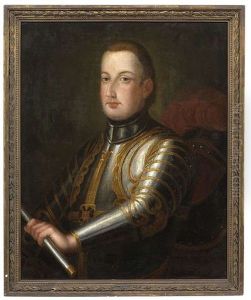Frans Goubau Paintings
Frans Goubau was a Flemish painter, born in Antwerp in 1616. He was a notable artist of the Baroque period, specializing in landscapes and genre scenes that often depicted rural life and markets. Goubau came from an artistic family, with his father, Jan Goubau, also being a painter. This familial background provided him with an environment conducive to developing his artistic skills from a young age.
In his early years, Goubau trained under the landscape painter Jan Breughel the Younger, which had a lasting influence on his approach to landscape painting. After completing his apprenticeship, Goubau became a master in the Antwerp Guild of Saint Luke in 1640. His work during this period was characterized by a keen attention to detail and a strong sense of atmosphere, which he achieved through the use of chiaroscuro and a warm, earthy palette.
Goubau's paintings often featured scenes of Italianate landscapes, despite there being no concrete evidence that he ever traveled to Italy. This Italian influence likely came from the prevalent trend of Italianate landscapes in Antwerp at the time, as well as the works of other artists who had visited Italy. Goubau's landscapes were peopled with figures engaged in everyday activities, imbuing his works with a sense of liveliness and narrative.
During the middle of the 17th century, Goubau's reputation grew, and his work began to garner more attention. He received commissions from wealthy patrons and his paintings were sought after by art collectors. Despite this success, there is not a great deal of information about his personal life, and he seems to have lived a relatively quiet life focused on his art.
Goubau's later works continued to reflect his strong command of landscape painting, but they also displayed an increased confidence in composition and a greater freedom in his brushwork. His continued engagement with the genre contributed to the development of landscape painting in Flanders and influenced subsequent generations of artists.
Frans Goubau passed away in Antwerp in 1689. Today, his works can be found in various museums and collections around the world, where they are appreciated for their contribution to the Baroque movement and their depiction of 17th-century Flemish rural life.



